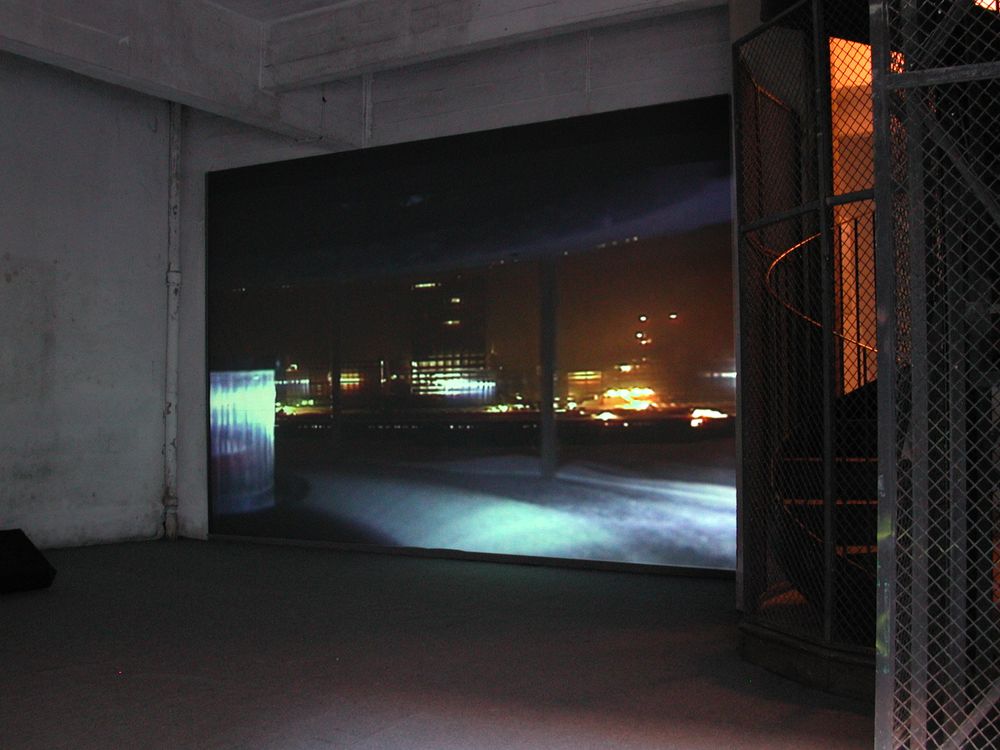AUTOBROUILLARD, 2002
Video 4/3, 36 min, sound
Production Emmetrop, Le Transpalette Bourges
Ed. 4 + 1 AP
Collection FRAC Limousin

Bertrand Lamarche, Autobrouillard, Exhibition view at the Transpalette, Bourges, 2003
The video Autobrouillard (Auto-Fog) is a polychromatic nocturnal view of an illuminated city progressively invaded by mist. Autobrouillard, filmed using a scale model just as Hollywood movies do for special effects, adapts the themes of city-as-set and the self-managed metropolis. We immediately recognize Bertrand Lamarche’s universe: the themes and motifs (architecture, maquettes, vortices, spires, hurricanes, fog) of an artist, a monomaniacal inventor, whose workshop produces miniatures of atmospheric phenomena. He makes machines that generate processes filmed by a built-in camera. The resulting image is often a spiral ia whirlwind in Tore [1998] and Station des eaux usées [Water Station, 2002]; Autobrouillard shows two rotating movements). Autobrouillard constructs the atmosphere of a fiction in which the common reference is an ideal autarkic city. What do Lamarche’s machines mean? They are polysemous and hybridize various models: the steam engine, automation, architectural follies. lf the fog machine recalls the emblematic cogs and gears of prehistoric Modern times, it plays a double role, also designating a fantasy of technological autonomy or the dysfunctionality of an ideal system, in this case a dream of climatic «self-management» or the nightmare of ecological pollution. A pleasure fog or destructive entropy? ln the style of follies, architectural projects dedicated to an imaginative conceit, Lamarche makes realistic chimeras, ambiguous objects that concretize a vision and simultaneously embody a contradiction inherent in every realized ideal, or perhaps scenographic fictions, whose main subject is architecture. In particular, they transcribe the antagonistic relations between utopia and reality.
Text by Anne Bonnin in ART PRESS 302, 2004